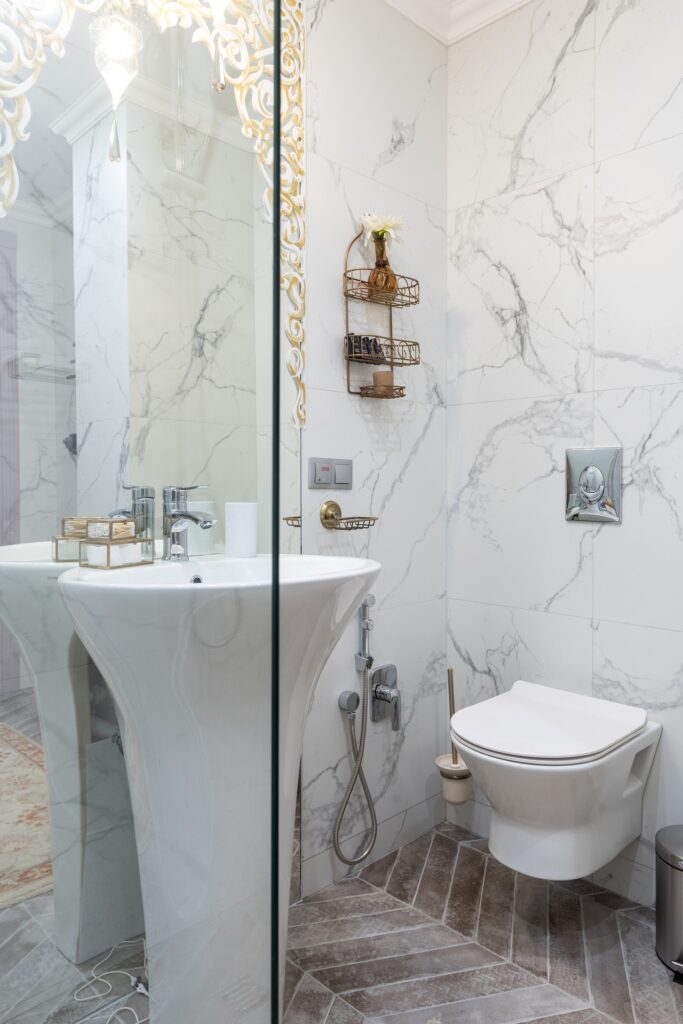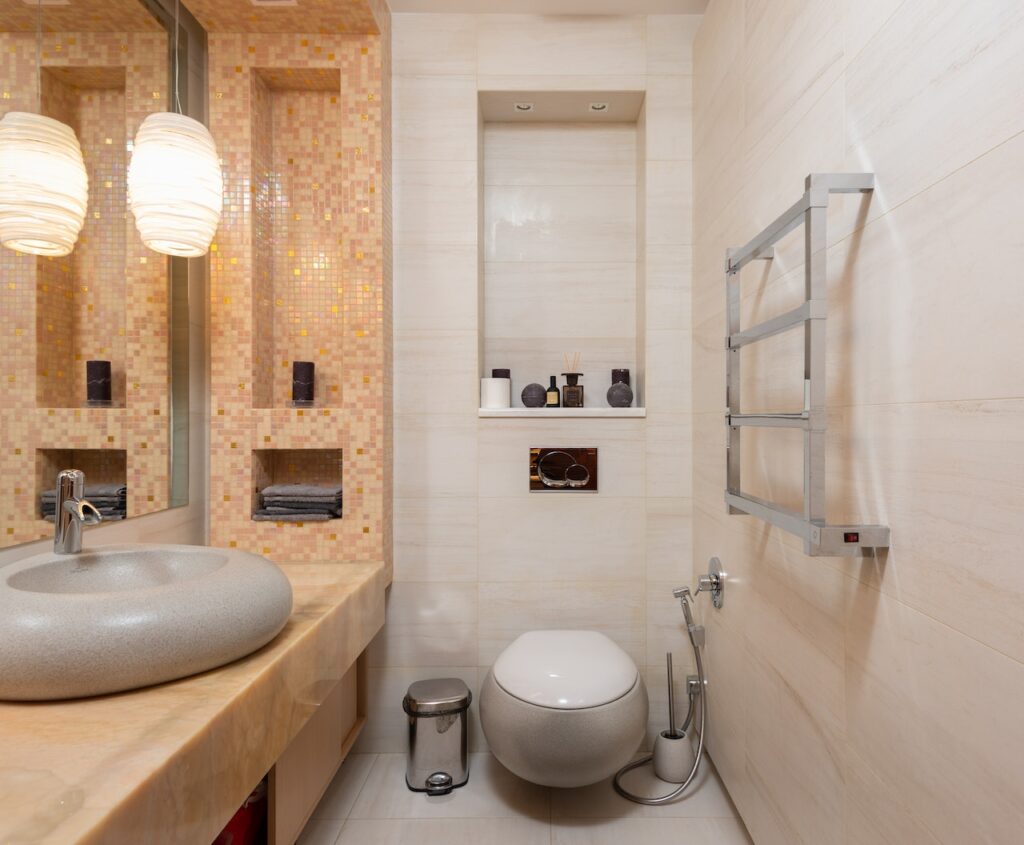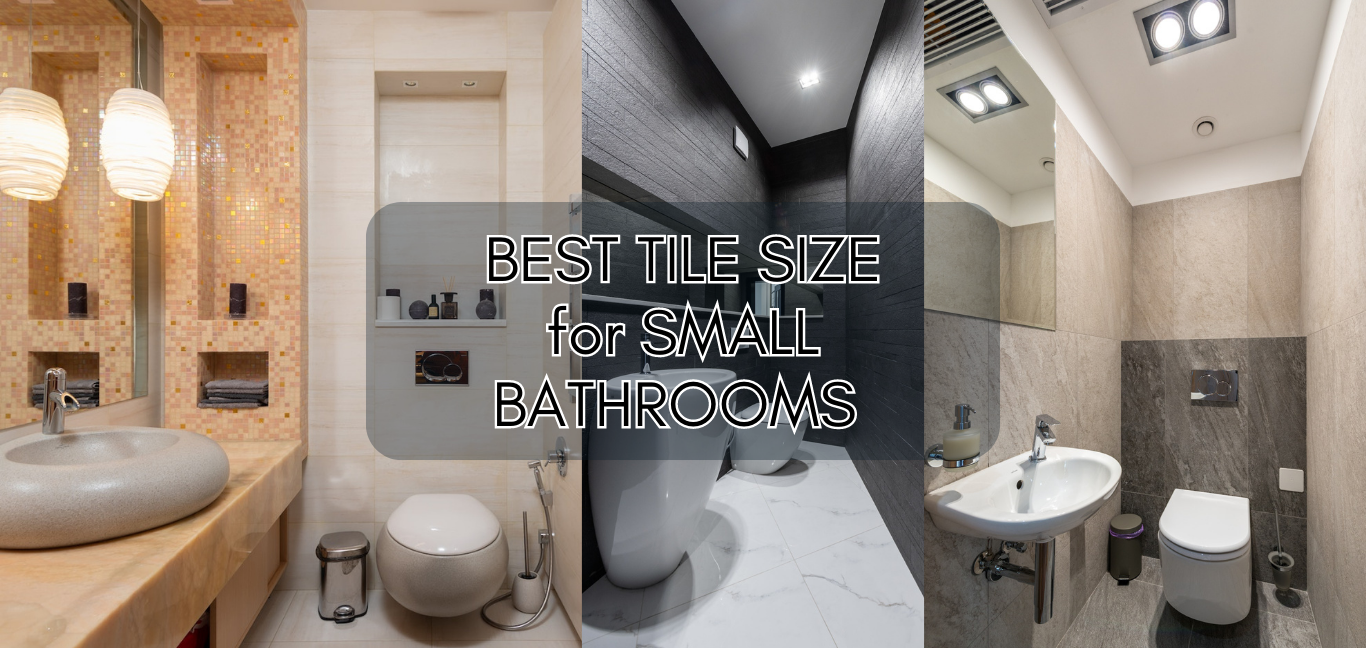Whether you’re doing a renovation or about to finish a new bathroom install, deciding what tile size to use for a small bathroom can be a challenge.
A small bathroom presents limitations when it comes to installing tiles. These include limited room for installers, and the myriad of tile designs available today.
The following article will help you find the best tile size for a small bathroom by weighing in the available tile sizing options in the market.
What’s the best size tile for a small bathroom?
Pros and Cons of Different Tile Sizes
The best tile size for small bathrooms mainly depends on your preferences, budget, style of choice and whether you are tiling a section of the bathroom or the entire area. Shape of the bathroom’s floorplan and ceiling height can also be factors that will affect which tile size is best for a small bathroom.
Large Format Tiles


Installing large format tiles became popular due to the development of stronger mortars and other tiling technologies. This led to more residential projects using large format tiles. A big advantage of large format tiles over smaller sized tiles is that the minimal tile seams provide create a continuous and seamless surface. Thus, large tiles can make a small bathroom look visually larger. Plank or rectangular shaped large format tiles when laid out vertically can draw the eyes upward giving the impression of a higher ceiling.
What are considered large format tiles?
Based on the latest Tile Council of. North America (TCNA) handbook, tiles are considered under large format tiles if one edge is greater than 15”.
Pros
- Seamless Modern Look
- Easy to Clean and Maintain
- Faster Installation with an Expert Installer
- More Hygienic
- Higher Resale Value
Cons
- Challenge to Install on Corners and Irregular Shaped Bathrooms
- Easily Shows Cracks and Other Types of Damage
- Need Expert Tiler
- Prone to Lippage Issues
- More Expensive
- Needs a Leveled Substrate
Medium Tiles

Two decades ago, the standard 4”x4” wall tiles and 8” x 8” floor tiles where popular bathroom tiling. These medium-sized tiles are easier to install and readily available in myriad of designs making them a popular DIYer go-to tile size. Today, these standard sizes are great options for small bathrooms but will lean towards a more traditional-styled bathroom. Although, with so many design options there are modern medium-sized tiles currently available. It’s a matter of finding the best
Pros
- Easy Installation
- Comes in a Wide Range of Materials
- Less Material Wastage
- DIY-friendly
- Readily available in most Home-Depot Stores
Cons
- Can Look Outdated
- Can Make a Room Smaller
- Takes Time to Install
- Grid-like Walls Can Be Claustrophobic
Small Tiles

Since small format tiles have more grout lines it can make a small bathroom look even smaller. However, small tiles look great as accent tiles even for small bathrooms. Emphasize a recessed wall by installing mosaic tiles to the entire cavity. This can add depth to the niche especially when the small tiles have a deeper or darker color giving a feeling of spaciousness. Not all types of small tiles can look overwhelming. Penny tiles, fish scale or scallop tiles are also great alternatives to your regular square or rectangular-shaped tiles. The curved
The standard mosaic tile size is typically less than 9 inches squared, or 3 inches or less on each side. To ease the installation, mosaic tiles are usually available mounted in groups on sheets.
Pros
- Precise Placement
- Easy Installation Under Fixtures
- Opportunity for a Unique Design
- Design Versatility
- Slip-resistant
Cons
- Take’s Time to Install
- Smaller Visual Impact
- High Maintenance
- Most Likely to Harbor Mold and Mildew
Takeaway:
- Best in making a small bathroom look wider: Large-format tiles
- Best for a small bathroom DIY: Medium-sized tiles
- Best for bathroom floors: Small-format tiles
Determining the best tile size for a small bathroom goes down with your specific requirements. If you are willing to invest on professional tile installation and prefer a minimalist look then large format tiles are a good option. But there’s the need for a structurally stable substrate that will be able to hold the heavy tiles in place. A leveled surface is also required to prevent cracking or misalignment of the large tiles.
When planning to install bathroom tiles yourself medium and small format tiles are more manageable as they are lighter and will need less cutting. Since there’s limited working space, moving around with large tiles can be challenging if not impossible to install. There’s also a long-term commitment in cleaning and maintaining the grout lines.
Large and medium tiles work well with bathroom walls. Small tiles are recommended for bathroom floors due to the increased traction brought about by the number of seams.
Definitions:
What are large format tiles?
TCNA handbook states that a large format tile has a dimension greater that of 15” on any side.
What is tile lippage?
Tile lippage is when two adjacent tiles in a tiled surface are not aligned. One tile edge will be lower or higher than the next tile. This vertical displacement occurs usually due to uneven surface. Other causes of slippage also include tile warpage or incorrect installation.
What are penny tiles?
As the name implies, penny tiles are round in shape and have a standard size of ¾” diameter and is 6mm or 1/4” thick.










